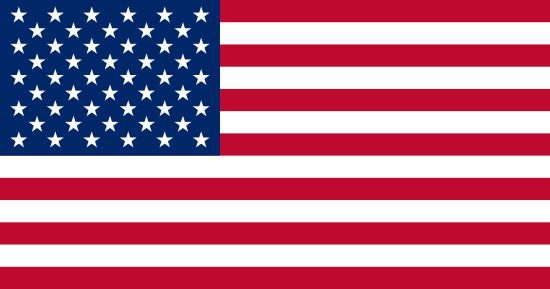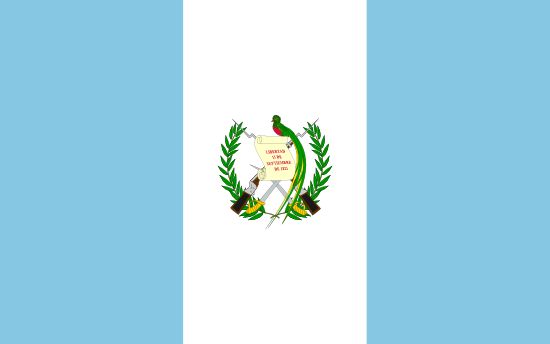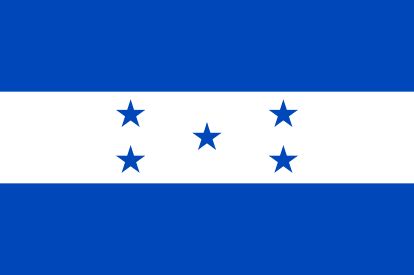

F115--VISN 4 VAMC - Energy Boiler Audits
Process Number 36C24422Q0064
Dates:
36C24422Q0064
Department/Ind. Agency:VETERANS AFFAIRS, DEPARTMENT OF
Sub-tier:VETERANS AFFAIRS, DEPARTMENT OF
Sub Command:244-NETWORK CONTRACT OFFICE 4 (36C244)
Office:244-NETWORK CONTRACT OFFICE 4 (36C244)
General Information:
(UTC-04:00) EASTERN STANDARD TIME, NEW YORK, USA
Updated Published Date:(UTC-04:00) EASTERN STANDARD TIME, NEW YORK, USA
Original Published Date:2021-10-29 08:54:00
Original Response Date:Nov 05, 2021 04:00 pm EDT
Inactive Policy:Manual
Original Inactive Date:Jan 04, 2022
Initiative:- None***--***
Classification:
F115 - ENVIRONMENTAL SYSTEMS PROTECTION- ENVIRONMENTAL CONSULTING AND LEGAL SUPPORT
NAICS Code:541620 - Environmental Consulting Services
Description:
GENERAL INFORMATION FOLLOWED BY A TENTATIVE STATEMENT OF WORK SOURCES SOUGHT NOTICE: This is not a solicitation but rather a Request for Information (RFI/Sources Sought) for market research purposes only. Veterans Health Affairs, Network Contracting Office 4, is issuing this Sources Sought in order to identify capable firms and obtain information for planning purposes only. Veterans Health Affairs, Network Contracting Office 4, is issuing this Sources Sought in order to identify capable firms for Energy Boiler Audits for VISN 4 VAMCs. Responses shall be submitted by 4pm (EST) November 5th, 2021. Responses shall be submitted via email to william.schlobohm2@va.gov . All SDVOSB and VOSB firms that respond shall include proof of CVE certification via Home  · VetBiz Portal (va.gov). All small business firms that respond shall include proof of small business status via their Representations and Certifications in accordance with (FAR 4.1102 Policy). While SDVOSB/VOSB contractors are preferred, all capable contractors are welcome to respond to this sources sought notice for market research purposes. All respondents shall include as part of their response a brief capability statement that covers the information in the following tentative Performance Work Statement (PWS), as well as answers to the below three (3) questions. The results of this market research will assist in the development of (1) the requirement, and (2) the acquisition strategy (e.g., socioeconomic set-aside, full and open competition, etc.). VA assumes no responsibility for any costs incurred associated with the preparation of responses. Suggested NAICS: 541620 (Environmental Consulting Services) Suggested PSC: F115 (Environmental Systems Protection - Environmental Consulting and Legal Support) Open to suggestions from the market as to a more proper NAICS and/or PSC, as well as any potential GSA/FSS Schedule SIN categories. Also open to suggestions/changes to the below PWS. In addition to the information requested above, please include answers to the below 3 questions as part of your response to this Sources Sought: 1. Identify any other companies owned (wholly or in-part) by the owners of this business who provide goods or services under the same or a related NAICS codes. 2. Identify any other companies owned (wholly or in-part) by the owners of this business who provide goods or services that are registered under the same or a related NAICS code with the Center for Veterans Enterprise (CVE); Provide the certification type (SDVOSB/VOSB), Federal Identification Number, and state of incorporation for each. 3. Do you plan on responding to a solicitation for this requirement with a Joint Venture utilizing multiple owned companies as majority or non-majority owner? Yes ___No ___ If yes, please identify which companies are considering a Joint Venture and the ownership of each company. SAMPLE / TENTATIVE PWS (BELOW) VISN 04 Energy Audits and Evaluation of Boiler, Deaerator, and Condensate Tank Project Overview The purpose of the Performance Work Statement (PWS) is to obtain technical, analytical, and strategic support to perform an Energy Audit as well as engineering evaluation of boiler, deaerator, and condensate tank reliability/life expectancy. Boilers and associated equipment serving VA medical centers must be reliable, safe, and efficient. The age of boilers and associated equipment is often a major indicator of reliability. The VHA Directive 1810 (1), BOILER AND BOILER PLANT OPERATIONS, assigns useful life expectancy , in years, to the boilers and plant equipment. The Directive requires that retention of certain equipment beyond the useful life expectancy must be based on an engineering evaluation of the reliability, efficiency, and cost effectiveness of continued operation. The contractor shall provide the subject matter expertise and all necessary resources to accomplish the deliverables described in the PWS, except as may otherwise be specified. The contractor will assist the Department of Veterans Affairs (VA) in identifying and analyzing Energy and Water Conservation Measures (ECMs) for potential investment in 10 VA Medical Centers located in the VA Veterans Health Care Network, also known as Veterans Integrated Service Network (VISN 04). Station Number Facility Name Location Sq ft Energy (MMBTU) Water (Kgal) 460 Wilmington VAMC Wilmington, DE 503,359 114,763 18,478 503 Altoona VAMC Altoona, PA 367,667 89,016 11,029 529 Butler VAMC Butler, PA 466,952 77,620 8,670 542 Coatesville VAMC Coatesville, PA 992,392 187,985 54,074 562 Erie VAMC Erie, PA 359,504 92,927 8,263 595 Lebanon VAMC Lebanon, PA 919,914 213,323 32,723 642 Philadelphia VAMC Philadelphia, PA 1,046,159 283,001 50,914 646 Pittsburgh, University Drive VAMC Pittsburgh, PA 1,046,562 283,660 59,431 646A4 Pittsburgh, Aspinwall VAMC Pittsburgh, PA 651,517 127,066 20,349 693 Wilkes-Barre VAMC Wilkes-Barre, PA 696,877 167,801 21,675 Acronyms and Definitions Acronyms Following are acronyms which may be used in place of full text throughout this Performance Work Statement: AQL Acceptable Quality Level ASHRAE American Society of Heating, Refrigerating and Air-Conditioning Engineers CAP Corrective Action Plan CBOC Community Based Outpatient Clinic CDC Centers for Disease Control and Prevention CDR Contract Discrepancy Report CLIN Contract Line Item Number CO Contracting Officer COR Contracting Officer s Representative CPARS Contractor Performance Assessment Reporting System CPR Contract Performance Report CTS Compliance Tracking System DA Deaerator DOE Department of Energy DOT Department of Transportation ECM Energy and Water Conservation Measures EERE Energy Efficiency and Removable Energy EPA Environmental Protection Agency FAR Federal Acquisition Regulation HIPAA Health Insurance Portability and Accountability Act IDIQ Indefinite Delivery Indefinite Quantity JCAHO Joint Commission on Accreditation of Health Organization OAEM Office of Asset Enterprise Management OCAMES VA Office of Capital Asset Management and Engineering Support OSHA Occupational Safety and Health Administration POC Point of Contact POP Period of Performance PRS Performance Requirements Summary PWS Performance Work Statement QASP Quality Assurance Surveillance Plan QCP Quality Control Plan TO Task Order TSO Temporary Storage and Disposal Site UN United Nation U.S.C. United States Codes VA Department of Veterans Affairs VAMC Veterans Administration Medical Center VCOR VAMC Contracting Officer Representative VHA Veterans Health Administration VISN Veterans Integrated Service Network VSSC VISN Service Support Center Definitions Following are definitions for words or phrases used throughout this PWS. Business Days. Monday-Friday excluding the weekends and federal holidays. Calendar Days. Every consecutive day on the calendar, including federal holidays and weekends. Contractor. A supplier or vendor having a contract to provide specific supplies or service to the Government. The term used in this PWS refers to the prime Contractor. Contracting Officer. A person with authority to enter, administer, and terminate contracts and make related determinations and findings on behalf of the Government. The only individual legally authorized to bind the Government. Contracting Officer s Representative. A person appointed by the Contracting Officer to take necessary action to ensure Contractor performs in accordance with and adheres to specifications contained in the contract and to protect the interest of the Government. Such appointment must be in writing and must state the COR s scope of authority and limitations. This individual does not have authority to change the terms and conditions of the contract. Contractor Performance Assessment Reporting System (CPARS). The official Government reporting system for Contractor past performance on awards. Quality Assurance. The Government procedures to verify provided Contractor services are performed according to acceptable standards. Quality Assurance Surveillance Plan (QASP). A written document specifying the methodology to be used to surveil Contractor performance. Quality Control. All measures taken by Contractor to assure the quality of services provided meets contract requirements. Task Order (TO). An order for services placed against the awarded/established contract. Veteran Affairs Medical Center Contracting Officer Representative (VCOR). A government employee of the Veteran Affairs Medical Centers. This individual works on site, has authority to provide direction to Contractor if within scope of the contract, does not constitute and change to the contract, and has no funding implications. The VCOR shall report any indication of non-compliance to COR/CO and the Contracting Officer will promptly take appropriate action. Such appointment must be in writing and must state the Veteran Affairs Medical Center (VAMC) COR s scope of authority and limitations. This individual does not have authority to change the terms and conditions of the contract. Background Federal Agencies are required to conduct energy audits of their covered facilities. This energy audit shall comply with all applicable requirements of Federal law, regulations, and executive orders, including but not limited to the National Energy Conservation Policy Act Fully Amended; Energy Independence and Security Act of 2007; Energy Policy Act of 2005. Objectives Contractor will address all the components shown in ANNEX A in a spreadsheet format by facility. The ECMs should be separated and numbered in the format shown in ANNEX A. The spreadsheet shall include separate tab(s) to support all calculations and assumptions. Calculations will be referenced in these tabs in standard scientific format and will note application location (tab and cell), for reference and Quality Assurance checking purposes. This includes but is not limited to: Boiler(s) and Boiler Plant Improvements. Review the amount of make-up water for both energy and water savings. Chilled water and air conditioning systems to include but not limited to chillers, chilled water plants, pumps, cooling towers, condenser units, DX split systems, window A/C units and other air conditioning systems. Building controls to include but not limited to the building and energy management equipment/system controls. Document/list all non-direct digital control (DDC) equipment/system and all pneumatic control (non-digital control) points. Medical Centers must meet VA HVAC Design standards for outside air and air changes per hour that are mostly based on ASHRAE 170. This requires outside air that exceeds air needed for ventilation, heating, etc. Assess the usefulness of existing room sensors or addition of new sensors to reduce outside air in rooms when they are not occupied. Air flow during unoccupied can be reduced to what is necessary to maintain temperature. Air Handlers pay special attention to heat recover options. Heating outside air is one of the largest uses of energy in our climate zones. High Rise Medical Center Ventilation Stack Effect and mitigation. Interior lighting system. Measure and ensure proper lighting levels and calibrate lighting controls for all occupied areas, and areas with 24/7 lighting. Exterior lighting. Building Envelope - Assess insulated window curtains.  Cold water/ hot water distribution / steam distribution / Identify uninsulated steam and hot water pipe, valves, PRVs, and other items. Include pipe features such as strainers, valves, receivers and more in addition to the pipe. Electric Motors and drives Any electric motors 1 HP and over that are not premium energy efficiency motors to be assessed and determine if variable frequency drives are a viable alternative. Refrigeration Review feasibility studies for all sites (when available) and update assumptions as appropriate. Alternative renewable energy resources and technologies should include, but are not limited to, the following: geothermal energy (direct geothermal, ground source heat pump); solar energy (photovoltaic, solar thermal, solar concentrating); wind (turbines); also identify if there is a source of bio-fuel which can be used to fuel existing boilers, reciprocating engines, turbines and other applicable equipment; methane from wastewater treatment plants or nearby landfills; and combined heat and power (CHP) system feasibility screening (use Department of Energy s FEMP Screening Form) and include fuel cell and microturbine technologies. Plumbing systems and water conservation to include but not limited to low-gallon per minute and dual-flush toilets and urinals, plumbing and water distribution system, and water conservation measures, in consideration of and coordination with VA Legionella Directive 1061, including thermal control requirements. Computer Room audit per latest American Society of Heating, Refrigerating, and Air-Conditioning Engineers (ASHRAE) standards. Include new thermal standards. Other: to include but not limited to items such as power factor correction, load shifting, metering recommendations, vestibule heaters. Assessment of potential savings resulting from facility recommissioning measures. Reports from the most recent retro-commissioning (May 2018) for all sites will be provided to the contractor. Through reviews, observations, surveys, interviews, and testing as needed, the contractor shall identify significant changes since last retro-commissioning report and provide estimated costs and savings for any recommended re/continuous commissioning measures. 2. The consultant shall supply all labor, material, and equipment to inspect and test the boilers and ancillary equipment at the Butler, Coatesville, Pittsburgh Heinz, Philadelphia, and Wilmington VAMCs. The work shall be documented in a full report of findings and recommendations. The report must be stamped by a licensed professional engineer. The following is a general list of equipment that must be addressed. a. List boilers, by make, type, size, and age Facility Equipment Manufacturer Manufacture Year Boiler Type (Fire Tube, Water Tube, etc.) Approximate Size (lbs./hr.) Boiler Operating Pressure (psig) Butler VAMC -529 Boiler Keeler 1970 Water Tube 20,000 110 Butler VAMC -529 Boiler Keeler 1969 Water Tube 20,000 110 Coatesville VAMC -542 Boiler #4 Keeler 1968 Water Tube 40,000 110 Coatesville VAMC -542 Boiler #2 Keeler 1968 Water Tube 20,000 110 Pittsburgh HCS-646A4 (Heinz) Boiler Johnston 1989 Fire Tube 12,000 90 Pittsburgh HCS-646A4 (Heinz) Boiler Johnston 1989 Fire Tube 12,000 90 Pittsburgh HCS-646A4 (Heinz) Boiler Johnston 1989 Fire Tube 12,000 90 Pittsburgh HCS-646A4 (Heinz) Boiler Johnston 1989 Fire Tube 12,000 90 Philadelphia VAMC - 542 Boiler Cleaver Brook 1978 Water tube 24,150 108 Philadelphia VAMC - 542 Boiler Cleaver Brook 1979 Water tube 24,150 108 Philadelphia VAMC - 542 Boiler Cleaver Brook 1979 Water tube 24,150 108 Wilmington VAMC - 460 Boiler Cleaver Brook 1978 Water Tube 20,700 100 Wilmington VAMC - 460 Boiler Cleaver Brook 1978 Water Tube 20,700 100 Wilmington VAMC - 460 Boiler Cleaver Brook 1978 Water Tube 20,700 100 Wilmington VAMC - 460 Boiler Cleaver Brook 1978 Fire tube 8,625 100 b. Deaerator (DA) tank Facility Equipment Manufacturer Manufacture Date Approximate Size (gal) Wilmington VAMC -460 Deaerator Allied Steel 1978 850 c. Condensate tank Facility Equipment Manufacturer Manufacture Date Approximate Size (gal) Wilmington VAMC -460 Condensate Tank Old Dominion Iron 1978 1363 Contractor Requirements, Confidentiality and Non-disclosure The contractor shall follow all Government rules and regulations regarding information security to prevent disclosure of sensitive information to unauthorized individuals or organizations. Contractor staff and management may have access to some privileged and confidential materials of the United States Government such as budget and strategic plans. Printed and electronic documents are for internal use only, and not to be copied or released without permission, and remain the sole property of the United States Government. Some of these materials may be protected by the Privacy Act of 1974 (revised by PL 93-5791) and Title 18. Any known and willful unauthorized disclosure of Privacy Act or Title 18 covered materials is a criminal offense. Regulatory standard of conduct governs all personnel directly and indirectly involved in procurements. All personnel engaged in procurement and related activities shall conduct business in a manner above reproach and, except as authorized by stature or regulation, with complete impartiality and with preferential treatment for none. The general rule is to avoid strictly any conflict of interest or even the appearance of a conflict of interest in Government-contractor relationships. Performance of the PWS requires travel by contractor personnel. All travel will be in accordance with the Federal Property Management Regulations (FPMR), 41 CFR Chapter 101 and Chapter 7, and any other applicable Government Travel Regulation. Travel arrangements shall be the responsibility of the contractor. Upon completion of travel, the contractor will submit a voucher including all receipts to the contracting officer for review. After review and acceptance, the contractor will be allowed to submit an invoice for travel costs against the line item in the task order for travel. A Not to Exceed dollar amount for travel will be funded upon issuance of a task order. Qualification Requirements for Consultant and Inspection Personnel: 1. A professional engineering firm (Professional License (PE)) that specializes in life expectancy evaluations must be part of the team and provide an analysis and recommendations under their seal based on the evaluation of the boiler and associated equipment by means of visual inspection and non-destructive testing conducted by experienced boiler inspectors and non-destructive testing experts on the team. 2. The inspections shall be supervised on-site by a Qualified Professional Inspector , defined as anyone or combination of the following. Proof of qualifications shall be provided with the bid and as part of the final report. a. A boiler inspector who has a valid commission from the National Board of Boiler and Pressure Vessel Inspectors. b. A boiler inspector who has qualified by passing a written examination under the laws, rules, and regulations of a jurisdiction of a state. c. A boiler inspector who is regularly employed as a boiler inspector by a jurisdiction that has adopted and administers one or more sections of the ASME Boiler and Pressure Vessel Code as a legal requirement, and has a representative serving as a member of the ASME (American Society of Mechanical Engineers) Conference Committee. d. A boiler inspector who is regularly employed by an insurance company that has been licensed or registered by the appropriate authority of a state of the United States to write boiler and pressure vessel insurance. 3. Non-destructive testing personnel shall be certified to American Society for Non-destructive Testing (ASNT) Level II, who are experienced in evaluating boilers and associated equipment. 4. Inspector: The Qualified Professional Inspector shall demonstrate familiarity with and ready access to the current versions of the following codes and manuals: ASME Boiler and Pressure Vessel Code ASME B31.1, Power Piping Code ANSI/NB-23, National Board Inspection Code NACE International Standard RP0590, Recommended Practice for Prevention, Detection and Correction of Deaerator Cracking VHA Boiler Plant Safety Device Testing Manual, current edition. The NDT technicians shall demonstrate familiarity with and ready access to the current version of: NACE International Standard RP0590, Recommended Practice for Prevention, Detection and Correction of Deaerator Cracking. Other Personnel Considerations Personnel assigned by the contractor to the performance of work on this contract shall be acceptable to VA in terms of personal and professional conduct and technical knowledge. Should the assignment to this contract of any person by the contractor be deemed to conflict with the interests of VA, or in the event performance is deemed to be unsatisfactory at anytime during the life of the contract, the Contracting Officer (CO) may notify the contractor and request the person be immediately removed from the assignment. The reason for removal will be documented and a request to receive key personnel replacement will be made. Replacement key personnel qualifications shall be equal to or greater than those of the key personnel being replaced. Employment and staffing difficulties will not be justification for failure to meet established schedules. The contractor must notify VA seven (7) calendar days in advance and the Contracting Officer s Representative (COR) will approve or reject new proposed contractor key personnel for the performance of this contract. The contractor shall submit a resume of qualifications and the Contractor Personnel Change Control form to the CO and all other direct employees proposed for the project. The CO will approve all contractor employees prior to bringing on duty via Contractor Personnel Change Request Form, at any time from date of award to the end of the contract, contractor personnel are no longer available, the VA will approve the qualifications of proposed replacement key personnel. All contractor employees are subject to immediate removal from performance of this contract when they are involved in a violation of the law, VA security, confidentiality requirements, and/or other disciplinary reasons. VAMC Responsibilities for Preparation of Boiler Inspection 1. Since steam production cannot cease, the consultant and the VA COR will have to work closely to develop an inspection schedule that will ensure the facility can always meet steam demand with sufficient backup. 2. The boiler will be prepared by VAMC for the inspection prior to the scheduled arrival of the inspector. This includes cooling the unit to near ambient temperature and having all manways and access doors open, the unit cleaned of loose materials, lock-out, tag-out in place, connecting piping isolated, proper illumination provided, compliance with confined space access requirements including having safety personnel present in the boiler plant. 3. VAMC will comply with any other requirements of the inspector that are considered reasonable by VAMC and have been presented in writing at least two weeks prior to the scheduled inspection. 4. Coordinate preparation work with the requirements of the inspection firm. 5. All records of maintenance and repair activities, water treatment logs, operational logs, inspection reports, and all histories of prior problems shall be readily available during the inspection. Records for three years are suggested. If the consultant requires copies, they will need to sign out the documents and return them upon completion. 6. Remove all manway and handhole covers, access panels. 7. Remove all drum internals. 8. Clean all fireside and waterside surfaces. 9. Remove insulation from water tube boilers steam and mud drum ends and from locations where pipes are connected to the boiler. 10. Arrange for ladders, lifts, and other devices necessary to allow access to the boiler. 11. Furnish copies of the original National Board (NB) Manufacturer s Data Report inspection form that was prepared for the boiler when it was new and NB Report of Repair forms if boiler pressure vessel repairs have been performed. Inspection Requirements of Boilers 1. Consultant shall develop a detailed list of information required at least two weeks prior to the inspection to allow the VA to compile the information. 2. Consultant shall develop a detailed schedule of the inspection in consultation with the VA COR to ensure availability of equipment as needed during the execution of the project. 3. Visually inspect the following items and document the locations with a sketch or pictures. Any adverse findings must be documented with pictures and notes in detail. All data shall be included in the final report as supporting documentation. a. Review the boiler/s history including operating conditions, date of last inspection, current inspection certificate, ASME stamping, National Board registration number, materials of construction, extent of post weld heat treatment, history of repairs and modifications. b. All welded and threaded pipe connections to the boiler shell or drum for signs of leakage or defects in the welded areas. Defects must be documented as to location with a sketch or picture and be non-destructively tested. c. Boiler support structure for proper alignment, evidence of sagging, shifting or misalignment. d. Boiler casings for signs of warping, misalignment, and overheating. e. All furnace tubes and all accessible convection tubes for alignment, evidence of corrosion, erosion, bulges, sagging, defective or deteriorated welds. f. Exposed surfaces of steam and mud drum in furnace, particularly ligament areas between tubes, for evidence of corrosion, cracking, scale buildup, other defects. g. Refractory for cracking, shifting, sagging, bulging or general deterioration. h. Internal areas of steam drum and mud drum (inside boiler shell in fire tube boilers). Welded outlet connections. Surface of drums for pitting or surface discontinuities. Ligament areas between tube holes for cracking. Each tube end and internal surface of representative number of tubes for pitting, erosion, corrosion, and excessive scale buildup. Utilize fiber optic inspection equipment to inspect interior of tubes. i. Clean and inspect shell or tube sheet between tube holes for cracking. VAMC Responsibilities for Preparation DA and Condensate Tanks Inspection 1. Since steam production cannot cease, the consultant and the VA COR will have to work closely to develop an inspection schedule that will ensure the facility can always meet feed water demand with sufficient backup. 2. The DA will be prepared by VAMC for the inspection prior to the scheduled arrival of the inspector. This includes cooling the unit to near ambient temperature and having all manways and access doors open, the unit cleaned of loose materials, lock-out, tag-out in place, connecting piping isolated, proper illumination provided, compliance with confined space access requirements including having safety personnel present in the boiler plant. Inspection Requirements for Deaerator (DA) and Condensate Tanks 1. The DA inspections shall comply with the guidelines in the current issues of the following documents: NACE International, Standard RP0590, Recommended Practice for Prevention, Detection and Correction of Deaerator Cracking. 2. NATIONAL BOARD INSPECTION CODE, Part RB, Inservice Inspection of Pressure-Retaining Items. a. Review the DA and condensate history including operating conditions, date of last inspection, current inspection certificate, ASME stamping, National Board registration number, materials of construction, extent of post weld heat treatment, history of repairs and modifications. b. Assess the external parts of the DA and condensate and accessories and piping for safety, accessibility, cleanliness. proper operation, and compliance with codes. c. Inspect for evidence of leakage. d. Inspect DA/condensate tank safety valve installation and verify that the valves have proper set pressure and capacity and are properly installed. e. Inspect support structures for proper integrity and allowance for thermal expansion. f. Internal inspections: Visually inspect all visible pressure vessel and tanks surfaces for corrosion, material thinning, deposits, and weld cracking. Inspect DA spray nozzles and trays. Certified American Society for Non-Destructive Testing (ASNT) Level II technicians shall perform non-destructive tests (NDT) using the wet fluorescent magnetic particle (WFMT), ultrasonic testing (UT), and any other necessary non-destructive tests. Completely examine all accessible welds utilizing the WFMT test method. Properly prepare the surfaces before testing. Determine pressure vessel material thickness by UT. Thickness measurement locations shall be selected by dividing the storage tank heads into quadrants and taking measurements at each quadrant on two imaginary rings in each head (eight measurements total). Measurement locations on the shell shall be on each of the quadrants, on four to six locations along the length of the shell (16 to 24 measurements total). The technician may recommend fewer or more tests to the owner, providing justification. Typically, the pressure vessel section containing the deaerator trays and sprays is not accessible for non-destructive testing. The experience is that this section, which is mainly exposed to steam, is less vulnerable to weld failures and material thinning than the storage section which contains condensate and make-up water. Boiler, Deaerator, and Condensate Tank Testing: The following Nondestructive testing shall be completed and document as to the location or findings with a sketch or pictures. Any adverse findings must be documented with pictures and notes in detail. All data shall be included in the final report as supporting documentation. 1. Ultrasonic thickness testing of representative samples of all components. 2. Obtain sufficient material thickness measurements to accurately reflect the condition of the entire boiler, DA, or condensate tank. a. Ultrasonic thickness testing of all areas visually noted to have corroded or eroded. b. Magnetic particle testing of all areas where indications of defects have been found visually. c. Metallurgical analysis of representative samples of boiler metal if there are indications or a record of overheating. Boiler, Deaerator, and Condensate Tank Calculations: The consultant shall calculate and report the maximum allowable working pressure rating and remaining life expectancy based on the thickness measurements, data obtained, observations and testing for the boiler, deaerator, and condensate tanks into which DA discharges. 1. ASME Code formulas must be used, and references provided in the final report. 2. Calculate and report the depletion rate of material thickness. 3. Remaining life calculation shall be based on original material thickness, current material thickness, evaluation of other factors in the condition of the boiler. Tasks After award, the contractor shall submit the following information to the Contracting Officer (CO) and Contracting Officer s Representative (COR) for approval: Proof of Insurance: Provide to the CO an insurance certificate within fourteen (14) calendar days after award of the project. Project Schedule: Provide a schedule that demonstrates complete fulfillment of all contract requirements, including specifically notating VA review periods of deliverables. The schedule shall include milestone dates, including activity start and end dates and activity description. The schedule shall be submitted within fourteen (14) calendar days of award. The VA will review the schedule and provide approval or comments within ten (10) calendar days of receipt of the schedule. The contractor has five (5) calendar days to address the comments and submit back to the VA for approval. The VA has up to an additional three (3) days to provide approval. The schedule approval process should not prevent the contractor from preparing other deliverables for the project. Contractor Quality Control Plan (CQCP): The contractor shall develop a CQCP and shall furnish to VA for review no later than fourteen (14) calendar days after award of project. The plan shall identify personnel, procedures, control, instructions, tests, records, and forms to be used. After acceptance of the CQCP, the Contractor shall notify the CO in writing of any proposed changes. Proposed changes are subject to acceptance by the CO. Kick-Off Meeting: Attend a teleconference between the VA team and the contractor. This meeting will require the contractor to take meeting minutes and provide to the VA within five (5) calendar days after the meeting. This kick off meeting shall not impact the performance of the contractor. Meeting Minutes: Provide meeting minutes as needed. Meeting minutes should be provided to the VA within five (5) calendar days after the meeting Site Visit: The contractor is required to submit a site visit schedule at the conclusion of the kick-off meeting. A site visit includes a technical representative to investigate and coordinate facility data and drawing availability at each site ahead of each site audit investigation teams coming to a facility, and to coordinate with designated point of contacts at each facility to discuss audit team protocols, means and methods, schedules, space access requests, safety requirements, infection control procedures, contractor badging requirements. One day per site should be scheduled for this pre-audit data gathering and coordination activity. Scheduled visits must be coordinated with each facility and may not be concurrent due to facility and VISN personnel availability. Progress Reports: During the execution of the Audits, the contractor shall submit Progress Reports to the CO and COR. An initial progress report shall be submitted thirty (30) calendar days after contract award and every thirty (30) calendar days thereafter continuing until submission of the Final Audit Report. The reports shall identify work completed, work in progress, project status, any problems, risks and the schedule for the remaining work. Baseline Planning: Baseline Planning and verification of energy & water (including sewer) consumption, to establish a status quo baseline. The contractor will develop a detailed energy and water baseline. The energy and water baseline shall include, but is not limited to, the Environmental Protection Agency s (EPA) Energy Star Portfolio Manager Program and VISN Service Support Center (VSSC) database of consumption. Consumption data to include energy and water commodity usage at the facility during the most recent three-year period is required in support of this analysis. Review Potential ECM List with VA: The EA will include an initial investigation of identified ECMs and describe in enough detail for VA to prepare a PWS, analyze, evaluate, recommend and prioritize energy and water/sewer conservation measures. The contractor will recommend and prioritize ECMs to capture potential energy and water conservation and cost savings opportunities as identified through the EA for each facility. The ECM list that the Contractor will provide to the VA must include the following: Executive summary Background/Introduction Existing conditions, to include campus layout, building identification to include, at a minimum, primary usage (hospital clinic, inpatient, outpatient, etc.) energy and water/sewer usage and cost, and building envelope description. Note that all buildings will be evaluated on each campus including storage buildings, quarters, etc. d. ECM evaluations. For each ECM evaluated, include, at a minimum: 1) ECM description in detail. 2) Evaluation method. 3) Estimated cost to implement, with detailed basis of costs provided. 4) Estimated energy and water/sewer consumption savings (using simple computer energy simulation method if applicable, for HVAC utilize BIN data or full simulation); - Table of Facility Energy and Water/Sewer Costs basis. 5) Identification of U.S. EPA's Emissions & Generation Resource Integrated Database eGRID region for calculation of Greenhouse gas (GHG) emissions savings; and 6) Simple payback and Savings to Investment Ratio (SIR). Submit Draft Energy Audit Written & Spreadsheet Reports (Individual): Contractor to use the attached written report sample for a draft written report example. Report shall contain all requirements specified in this work statement. Contractor to provide the following: One electronic copy submitted for each site One electronic copy to the VISN Energy Manager for each site Deliverable 1 - Energy Audit Written Report (Individual): Contractor to use attached energy audit spreadsheet sample as an example. Contractor to provide the following: One electronic copy per site One electronic copy to the VISN Energy Manager per site Two presentation-grade three-ring binders with indexed tabs One hard copy of the report per site One hard copy of the report to the VISN Energy Manager per site Deliverable 2 Energy Audit Spreadsheet (Individual): Contractor to use the attached written report sample for a final written report example. Contactor to provide the following: - One electronic copy per site - One electronic copy to the VISN Energy Manager per site Deliverable 3 Energy Audit Written Report (Consolidated): Contractor to provide a consolidated final written report to include all sites. Contractor to provide the following: One electronic copy of the combined report (all sites) to the VISN Energy Manager One electronic copy of the combined report (all sites) to the OAEM Program office Deliverable 4 Energy Audit Spreadsheet (Consolidated): Contractor to provide a consolidated Energy Audit Spreadsheet report to include all sites. Contractor to provide the following: One electronic copy of the combined spreadsheet to the VISN Energy Manager One electronic copy of the combined spreadsheet to the OAEM Program office Energy Audit Draft and Final Written Report Deliverable Format Report to include the following: Table of contents Executive summary Description of facility Facility Information, including: Energy consumption and intensity over the last three years Comparisons to federal EISA and Executive Orders Energy, water, and GHG baseline year consumption and production (GHG) Individual report for items a-n listed under #6 the Scope of Work section Color photos with descriptions and locations Color coded graphics and spreadsheets as applicable Complete appendices and references to fully document and validate: findings, assumptions, investigation observations and calculations Boilers, Deaerators, and Condensate Tank Report Requirements: 1. Provide complete written report fully describing all inspections and tests performed, findings, and recommendations. The condition of all items inspected shall be stated whether acceptable or deficient. All deficiencies shall be fully described along with recommendations for methods of correction. 2. Provide oral report of condition of the boiler to VAMC engineering management at the conclusion of the inspection and prior to leaving the site. 3. Provide a draft report Microsoft (MS) Word format withing 7 days of the completion of inspection for review and comment by the COR. Once approved by VA, provide MS Word format and 6 copies of final report to COR. 4. Provide complete narrative of the history of the equipment in the plant and current conditions of the same as well as an analysis of the visual inspections and test results, photographic views of deteriorated areas and photographs to show areas identified as not acceptable for continued service or requiring repair. 5. Provide calculations for remaining life based on calculated present maximum allowable working pressure vs. original maximum allowable working pressure when the boiler was new. Show locations and extent of all non-destructive testing by sketches. (Spec Writer Note: this applies to boiler, deaerator and only condensate tanks that are feed from deaerator). 6. Describe all deteriorated areas; provide expert judgment on need for repairs and repair methods. 7. Provide expert judgment on cost effectiveness of retaining the boiler in service. 8. Provide expert analysis of the condition of boilers/ancillary equipment and recommended extension to useful life in years. 9. Provide photographs and/or drawings and show where each the measurements or negative observation was taken. 10. All safety-related deficiencies shall be immediately reported to the COTR during the inspection visit. 11. Provide recommendations on need for re-inspections after correction of deficiencies. Cost of re-inspections shall be extra cost negotiated with VA Contracting Officer. Delivery Schedule/Period of Performance Period of Performance is for 180 calendar days from the date of award. No work shall take place on Government property on Federal holidays or weekends unless approved by the CO. It will be necessary to coordinate site work with both the Medical Center Energy Engineers and the VISN Energy Engineer so that site work can be accomplished that meets their schedules. Event Name Time 1 Proof of Insurance Award + 14 calendar days 2 Project Schedule Award + 14 calendar days 3 CQCP Award + 14 calendar days 4 Kick-Off Meeting Award + TBD 5 Meeting Minutes (as needed) Award + TBD 6 Site Visit Award + TBD 7 Progress Reports Award + 30 calendar days, then monthly 8 Baseline Planning Award + TBD 9 Review Potential ECM List with preliminary energy, water and cost savings with VA Award + 120 calendar days 10 Submit Draft Energy Audit Written & Spreadsheet Report (Individual) Award + TBD 11 Deliverable 1 Energy Audit Written Report (Individual) Award + TBD 12 Deliverable 2 Energy Audit Spreadsheet (Individual) Award + TBD 13 Deliverable 3 Energy Audit Written Report (Consolidated) Award + TBD 14 Deliverable 4 Energy Audit Spreadsheet Report (Consolidated) Award + TBD Formal Rejections and Acceptance of Deliverables 1. The Government will have fourteen (14) calendar days from submission of deliverable to review each document and provide feedback and/or comments. The contractor shall have seven (7) calendar days to incorporate comments. After delivery of the final document with comments the Contractor will be notified within fourteen (14) calendar days whether the document is accepted. Delivery of the final document with incorporated comments shall not constitute acceptance by the Government. 2. Satisfactory completion of the contract shall be measured by successful completion of the listed deliverables and tasks identified. Completion of deliverables shall remain within the scope of the approved PWS. Project Acceptance All submittals and deliverables must be received and approved by the COR and the Contracting Officer before final acceptance and payment of the line item will be made. ANNEX A: ECM NUMBER LISTING # ECM Technology Category ECM Number ECM Type 1 Boiler Plant Improvements 1.1 Boiler control, including new controls, retrofits to existing controls, burner replacement, heat recovery. 1.2 Replacement of existing boilers with high efficiency boilers 1.3 Boiler decentralization 1.4 Other 2 Chiller Plant Improvements 2.1 Chiller retrofits or replacements 2.2 Chiller plant pumping, piping, and controls retrofits and replacements 2.3 Other 3 Building Automation Systems/Energy Management Control Systems (EMCS) 3.1 Heating, Ventilating, and Air Conditioning (HVAC) upgrade from pneumatics to Direct Digital Control 3.2 Upgrade or replacement of existing EMCS systems 3.3 Other including diagnostic software. Also, reduce outside air when unoccupied. 4 Heating, Ventilating, and Air Conditioning 4.1 Packaged air conditioning unit replacements 4.2 HVAC damper and controller repair or replacement 4.3 Window air conditioning replacement with high efficiency units 4.4 Cooling tower retrofits or replacements 4.5 Economizer installation 4.6 Fans and pump replacement or impeller trimming 4.7 Thermal energy storage 4.8 Variable air volume retrofit and fan wall option. 4.9 Other including heat recovery options. 5 Lighting Improvements 5.1 Interior and exterior lighting retrofits and replacements 5.2 Intelligent lighting controls 5.3 Occupancy sensors 5.4 Light Emitting Diode technologies 5.5 Daylighting 5.6 Spectrally enhanced lighting 5.7 Fiber optic lighting technologies 5.8 Other 6 Building Envelope Modifications 6.1 Insulation installation 6.2 Weatherization 6.3 Window replacement 6.4 Reflective solar window tinting 6.5 Other 7 Chilled Water, Hot Water, and Steam Distribution Systems 7.1 Piping insulation installation 7.2 Hot water heater repair and replacement 7.3 Steam trap repair and replacement 7.4 Repair or replacement of existing condensate return systems and installation of new condensate return systems 7.5 Other including replacement of steam heat systems with hot water or other heating methods. Also, consider ways to utilize or minimize flash steam. 8 Electric Motors and Drives 8.1 Motor replacement with high efficiency motors 8.2 Variable speed motors or drives 8.3 Other 9 Refrigeration 9.1 Replacement of ice/refrigeration equipment with high efficiency units  9.2 Other 10 Distributed Generation 10.1 Cogeneration systems installation 10.2 Microturbines installation 10.3 Fuel cells installation 10.4 Other 11 Renewable Energy Systems 11.1 Photovoltaic system installation 11.2 Solar hot water system installation 11.3 Solar ventilation preheating system installation 11.4 Wind energy system installation 11.5 Passive solar heating installation 11.6 Landfill gas, wastewater treatment plant digester gas, and coalbed methane power plant installation 11.7 Wood waste, other organic waste stream heating or power plant installation 11.8 Replacement of AC and heating units with ground coupled heat pump systems 11.9 Other 12 Energy/Utility Distribution Systems 12.1 Transformers installation 12.2 Power quality upgrades 12.3 Power factor correction 12.4 Gas distribution systems installation 12.5 Other 13 Water and Sewer Conservation Systems 13.1 Low-flow faucets and showerheads 13.2 Low-flow plumbing equipment 13.3 Water efficient irrigation 13.4 On-site sewer treatment systems   13.5 Other 14 Electrical Peak Shaving/Load Shifting 14.1 Thermal energy storage 14.2 Gas cooling 14.3 Other 15 Energy Cost Reduction Through Rate Adjustments 15.1 Change to more favorable rate schedule 15.2 Lower energy cost supplier(s) (where applicable) 15.3 Energy service billing and meter auditing recommendations 15.4 Other 16 Energy Related Process Improvements 16.1 Production and/or manufacturing improvements 16.2 Recycling and other waste stream reductions 16.3 Industrial process improvement 16.4 Other 17 Commissioning Measures 17.1 Commissioning Measures 17.2 Other 18 Advanced Metering Systems 18.1 Advanced Metering Systems 19 Appliance/Plug-load reductions 19.1 Replace air-cooled ice/refrigeration equipment 19.2 Replace refrigerators, note personal items that are not energy star rated. 19.3 De-lamp vending machines 19.4 Plug timers 19.5 Energy Star® products, Computer Power Down 19.6 Other 20 Other 20.1 Other END OF PERFORMANCE WORK STATEMENT
Attachments / Links:
| Document | Size | Updated date | Download |
|---|
Contact Information:
1010 DELAFIELD ROAD
PITTSBURGH , PA 15215
USA
Primary Point of Contacts:william.schlobohm2@va.gov












